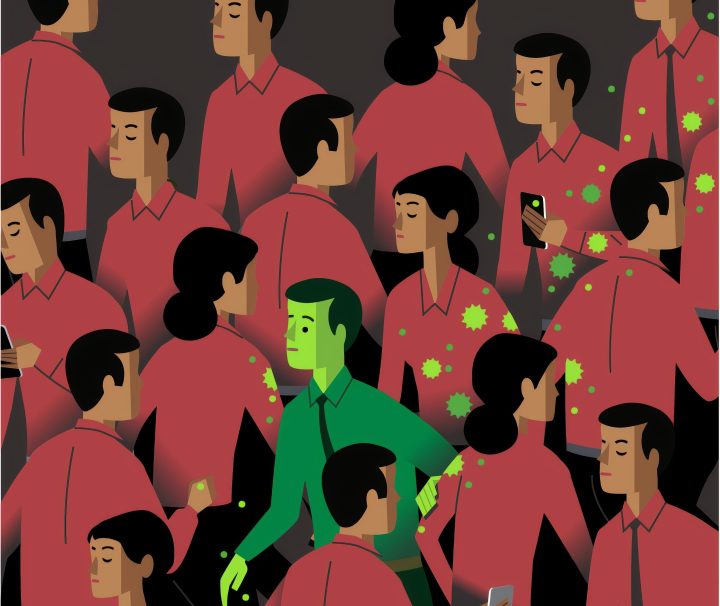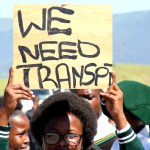MAVERICK LIFE OP-ED
A course in common sense to mitigate against the plague of dumb?

Amid my rising frustration at those who find ways around the physical distancing rules, I came across something cathartic to do online. A short academic course focused on Covid-19 Contact Tracing that looked like an antidote to the baffling ignorance that’s turned social media into a lunatic asylum.
Last Monday, Johns Hopkins University launched a free online course covering the basics – and not-so-basics – of Covid-19 Contact Tracing.
The course is available free-of-charge via Coursera and is worth dipping into, if only to momentarily escape from the vast ocean of dumb available in most other parts of the internet.
If the straightforward science of physical distancing makes any sense to you, there’s a strangeness that comes with seeing people amass in huddles during lockdown Level 4’s too-tight exercise window.
Whether it’s observing cyclists jibber-jabbering mask-free as they whizz by in dozen-strong pelotons; or seeing couples strolling the Sea Point promenade sipping takeaway coffees while knowing full well that in poorer areas – in townships and slums, and in homeless shelters – people are living cheek by jowl oblivious to the luxury of being able to practise social distancing.
The flagrant flouting of common sense doesn’t end at 9am. In brightly-lit supermarkets, I’ve felt strangers breathing down my neck in the check-out queue despite the distance markers on the floor. Because apparently grocery runs are really a chance for clandestine catch-ups with friends who can’t legally come round for dinner.
And, upstairs, I can hear when my neighbour welcomes friends round for an afternoon of smoking on the balcony. Stuff physical distancing, his zol soirees are real.
Amid my rising frustration, I came across something cathartic to do online. A short academic course focused on Covid-19 Contact Tracing that looked like an antidote to the baffling ignorance that’s turned social media into a lunatic asylum.
And so, for a few hours, I sought refuge in pre-recorded lectures, information slides, training videos, and – God help me – assessment quizzes. The course is presented by Johns Hopkins Bloomberg School of Public Health and is free and available to anyone with internet access. You don’t even need a high school certificate – you could immediately ditch your Facebook fake news diploma, in fact, and instead start wrapping your head around something serious and worthwhile. It requires roughly five hours of your life and is designed to fast-track candidates for what’s becoming one of the most vital jobs in public health.
In a world gone mad with opinions and conspiracy theories and blame game rants, the course is a voice of calm reason – mostly it’s the voice of Dr Emily Gurley, the infectious disease epidemiologist who presents the course. The virtual boot camp not only takes you through the theory and practice of contact tracing but deepens your knowledge of SARS-CoV-2, the disease it causes and its various symptoms, how transmission works, and how to identify environments and situations that are at higher risk of transmission.
You are also taught how to calculate the isolation period required for positive cases and the period for which close contacts of cases need to quarantine.
What these countries have proven with their programmes of mass testing, contact tracing and the isolation of exposed and infected individuals is that it is possible to radically flatten the curve.
Unlike so much of the muck posted by your friends on Facebook, the course delivers practical, actionable information as well as less tangible thinking around the procedural ethics of contact tracing. It even provides training in effective communication and helps you figure out how to earn the trust and buy-in of people you need to have difficult conversations with.
Fundamentally, a contact tracer has the rather arduous job of reaching out to confirmed (positive, tested) Covid-19 cases and then gathering a list of all their close contacts during their infectious period. Those close contacts include everyone an infectious person had physical contact with – or spent 15 minutes within six feet (1.8m) of – from two days before they fell ill.
Before diving into the course, contact tracing sounded to me like herding cats. An utterly implausible exercise, I imagined, given the jumble of human interactions most of us have each day. To my mind, the level of sleuthing required to track down each strand in a vast web of human connections seemed unfathomable. But the fact is that, for decades, contact tracing has been a proven tool in stopping epidemiological spread. It was critical in stemming the Ebola outbreak in West Africa, and in the current pandemic has been used to great advantage in countries like South Korea and Germany where swift, early intervention has had measurable results.
What these countries have proven with their programmes of mass testing, contact tracing and the isolation of exposed and infected individuals is that it is possible to radically flatten the curve.
However, what you learn in one of the course’s early lectures is that the window of opportunity for tracing close contacts of Covid-19 cases is extremely narrow. Because cases become infectious two days before they fall ill, it is entirely possible for them to have transmitted the virus before they show any sign of being sick. The course stresses this vital fact, reminding you over and over again that you do not need to be sick to be infectious.
That’s the delusion that anyone treating physical distancing as a joke fails to comprehend.
While I learnt a ton from the course, scored diligently on the quizzes, and found the majority of the material easy to digest and comprehend, I also discovered that I’m probably poorly suited to the reality of being a contact tracer. Because it really does come down to temperament.
During one module – “Steps to Investigate Cases and Trace Their Contacts” – a key lecture consists of watching two videos. The first is a simulated contact tracing call with a confirmed Covid-19 case, while the second call shows a different contact tracer speaking with one of the close contacts traced in the first call.
Both conversations are polite, well-meaning, personable, and very clear; they’re described in the introduction as “trouble-free” – no swearing, no rebellion, no outbursts, and no refusal to cooperate or pushback of any kind.
I also found myself wondering how such calm, rational, support-based interventions might play out in a country where the police and military have already been deployed into neighbourhoods and the use of force has already ruined people’s lives.
These simulations are designed to demonstrate how to put sick people at ease and politely gain the cooperation of people who are asked to stay off work for as many as 14 days or more and discontinue all outside activity – not even trips to the grocery store are permitted for close contacts who are asked to quarantine.
They also demonstrate the ethical application of public health protocols and show how to build rapport – the theoretical frameworks for both are taught in the lectures, along with overcoming challenges presented by more onerous conversations. Which is all well and good for someone with the right disposition; unfortunately, the patience required for this kind of work goes well beyond my tolerance threshold.
I also found myself wondering how such calm, rational, support-based interventions might play out in a country where the police and military have already been deployed into neighbourhoods and the use of force has already ruined people’s lives.
I tried to imagine having these reasoned, rational conversations with the people taking social strolls on the promenade and refusing to respect physical distancing rules in supermarkets, and had to wonder if we will ever be ready to use calm, polite conversations in an attempt to defeat the pandemic.
Still, the course opened my eyes. It offers hope and is a reminder that treating people with respect is crucial in winning their trust and cooperation. And aside from providing actionable information and practical training, it does what social media always fails to achieve: It cuts through the hysteria and provides steps designed to slow and stop the spread of infection.
Perhaps what seems like common sense to some really needs to be communicated in the serious, sober, academic tone of someone like Emily Gurley. Even if it doesn’t turn everyone who signs up into a contact tracer, her course gets across the reality that if you’re meeting up to cycle with 11 mates and two days later one of them gets sick, there’s some possibility you could all be infected. And that’s a lot of phone calls, a lot of long-winded explaining, and a lot of time wasted that could be used to deal with an outbreak in a community where scores of people share one toilet, have limited access to water, or live 12 to a room.
Who knows how much joy will be had trying to figure out where a line of infection starts and where it ends. And whether it passes through an illicitly operating shebeen or during one of those cosy afternoon get-togethers my upstairs neighbour enjoys.
At least if you spend five hours finding out just how much patience is required to deal with each and every close interaction that happens between an infected person and another human being, you might better understand why keeping two metres from your friends is one way of keeping them safe. Not to mention the 11 people they might end up cycling with tomorrow morning. DM/ ML

















 Become an Insider
Become an Insider